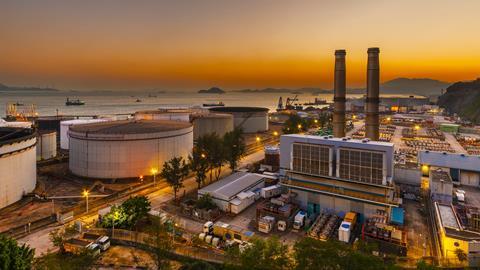CO2 emissions are a modern problem. Before 1850, they came from the burning of traditional biomass fuels, amounting to a few million tons per annum (tpa). This reflected the Earth’s relatively small human population, which remained under 1 billion people to the end of the 19th century. But in the early 20th century, everything changed. Abundant coal-based power drove industrialisation and economic growth forward in Europe and North America, and the invention of petroleum refining in the 1920s gave society access to practically limitless energy.
CO2 emissions are a modern problem. Before 1850, they came from the burning of traditional biomass fuels, amounting to a few million tons per annum (tpa). This reflected the Earth’s relatively small human population, which remained under 1 billion people to the end of the 19th century. But in the early 20th century, everything changed. Abundant coal-based power drove industrialisation and economic growth forward in Europe and North America, and the invention of petroleum refining in the 1920s gave society access to practically limitless energy. This coincided with two crucial discoveries: In 1921, Alexander Fleming, a physician working in St. Mary’s hospital in London, accidentally discovered lysozyme, the first antimicrobial protein. Across the English Channel, in Ludwigshafen, Carl Bosch and Alwin Mittasch at BASF were optimising the catalytic Haber-Bosch process for making ammonia, invented by Fritz Haber a decade earlier. The combination of antibiotics, fertiliser, and abundant energy led to an exponential increase in prosperity and population, from under two billion people a century ago to eight billion today. With this increase in population and quality of life came an increasing demand for energy, almost all of it from fossil fuels, leading to a staggering 35 billion tons of CO2 emitted in 2020.
Cement

In addition to CO2 our industrialised society emits other greenhouse gases such as methane and NOx. To simplify, we use ton-CO2-equivalents. In 2019, the overall emission of GHGs was 59 Gt. In 2022, despite the COVID-19 pandemic, emissions surpassed 60 Gt. Per capita emissions in some countries is decreasing, but with more people the absolute quantity of emissions worldwide increases.
CO2 emissions are divided roughly over energy applications (residential and commercial heating, transport, iron & steel, and energy use in industry), agriculture and forestry, cement manufacturing, chemicals and waste. Some sectors receive much publicity, and therefore their contribution to emissions (and the benefit of reducing it) is disproportionately amplified. Road transport, for example, accounts for only 12% of global emissions, and air travel for only 2%. There is no single culprit sector. Our lives are so integrated with energy consumption that a change would require a drastic reduction in the quality of life worldwide. This is unthinkable, and so people and governments avoid thinking about it. But ignoring the problem will not make it disappear.
Some emissions are unavoidable. Cement production, for example, accounts for ca. 4% of global emissions – more than all aviation and shipping combined. The demand for cement grows with more housing, roads and infrastructure. Yet cement is made by converting calcium carbonate to calcium oxide. This reaction requires energy (DH°=179,1 kj/mol), resulting in CO2 emissions. But it also releases a mole of CO2 for every mole of calcium oxide product. Making a ton of cement will always release 800 kg of CO2, even if the energy would come with zero pollution. In theory this CO2 could be captured and stored, but this is too expensive.
’There is no simple solution to this puzzle’
Zero-emission
Everyone agrees that sustainability is good. The UN Sustainable Development Goals include Affordable & Clean Energy (#7), Sustainable Cities and Communities (#11) and Climate Action (#13). Sustainability features on company websites and press releases. But how realistic is this? Worldwide energy comes mainly from coal (25%), crude oil (29%), natural gas (23%) and biomass (7%). Solar, wind and geothermal energy account for <5%. To reach the goal of the 2015 Paris Agreement we must replace all coal power stations with zero-emission renewables by 2030. This is not possible. Coal power stations accounted for 42,000 TWh in 2020. But even if you closed all of them, a 1:1 replacement is simply impossible. Sunlight and wind are free, but the sun does not shine at night nor does the wind blow 24/7. Replacing 1 TW of coal power requires 3 TW of wind or 7 TW of photovoltaics. The numbers are not in our favour.
We must understand and accept that competing with the free energy that we get from fossil fuels is extremely difficult. Fossil fuels feature a combination of high energy density and high power density. No one denies the basic right of people to clean water, nourishing food, a roof over their heads and basic education. But in today’s world, the improvement of the quality of life for over 2.5 billion poor people in Africa and Asia means a continuing operation of coal, oil and gas power plants.
Nearly 200 countries signed pledges and agreements at the Glasgow COP-26 meeting. Sounds impressive. But the countries that didn’t sign include China, India, Australia, Brazil, Russia and the US – the places where most of the coal is mined, most of the CO2 is emitted and most of the people actually live. Small rich countries promote emission reductions, but they are small. India has 1.4 billion people. China has 1.4 billion people. Actions in Denmark, the Netherlands, Germany or France will not stop global climate change.
The human factor is crucial here, because GHG emissions are everybody’s long-term problem, but they are nobody’s short-term problem. A typical coal-fired power plant that generates 660 MWh costs about $2Bn. Such plants can operate for 40–50 years. Imagine that you are the CEO that runs such a plant, built 20 years ago. Your company faces increasing pressure to close down the plant. But if you close, you’re throwing away $1Bn. CEOs who lose billions typically lose their jobs and may even go to jail. Alternatively, if you kick the can down the road, you will get a bonus at the end of the quarter. Which option will you choose?
’Optimistic scenarios encourage the view that “every little bit helps”’
Adapting
Worldwide GHG emissions are directly related to the number of people on Earth and their energy footprint. Average energy footprint per capita is stable in rich countries, and in some cases is even decreasing slightly. However, this is offset by a large increase in energy demand per capita in developing countries, especially in Africa and Southeast Asia. In the coming decades, as billions of people move out of poverty, worldwide energy demand will continue to rise. 80% of this demand is met by burning coal, oil, and gas. There is no simple solution to this puzzle.
The media hype surrounding discoveries in sustainable chemistry and sustainable energy may help scientists and companies working in these areas, but real-life implementation will only happen if these discoveries bring direct economic benefit. So long as GHG emissions are treated as externalities, there will be no economic incentive for replacing incumbent technologies. Optimistic scenarios encourage the view that “every little bit helps”. The truth is that large-scale problems cannot be solved by small-scale actions. We must realise that we will not reach the goals of the Paris Agreement in time to prevent climate change. Thus, in addition to investing in prevention, we should invest in adapting to living in a world with average temperatures 3–4 °C higher than pre-industrial times. Wake up. It is later than you think.
Gadi Rothenberg is professor of heterogeneous catalysis and sustainable chemistry at the University of Amsterdam. This contribution is based on his article ‘A realistic look at CO2 emissions, climate change and the role of sustainable chemistry’ in Sust. Chem. Clim. Action (2023) [Open Access]













Nog geen opmerkingen